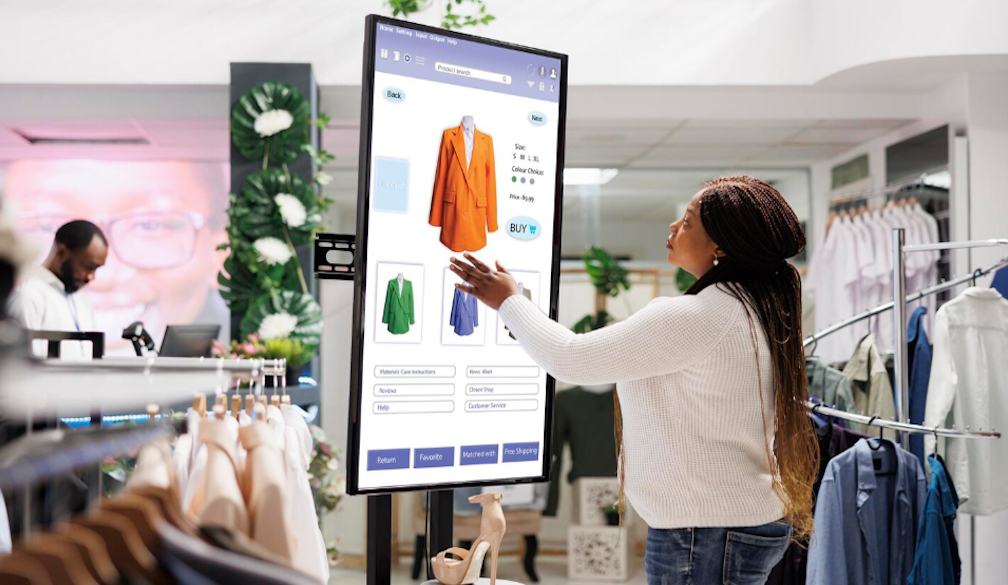4 Ecommerce Trends to Watch Out for in 2025

Ecommerce in 2025 is a fast-moving, tech-fueled landscape, and only the most adaptive brands are thriving. Consumers are shopping more online than ever, but their expectations are also higher: speed, personalization, trust, and convenience are now the baseline.
To keep pace, ecommerce entrepreneurs must stay informed and agile. Below are four major trends driving ecommerce success in 2025, along with examples and strategies to help your business grow in today’s competitive market.
1. Fast, Free, and Flexible Shipping Is the New Standard
In 2025, customers expect next-day delivery, or sooner. The global supply chain has largely recovered from pandemic-related disruptions, and industry giants like Amazon, Walmart, and Target are investing heavily in local fulfillment infrastructure.
This rising bar for convenience is reshaping customer expectations across all ecommerce verticals. A report from McKinsey & Company finds that 90% of consumers expect two- or three-day delivery as a baseline. 30% expect same-day delivery.
To remain competitive:
- Offer free shipping wherever possible, even if you increase product pricing to account for it.
- Use regional warehouses or 3PL services to get products closer to buyers.
- Add local delivery and store pickup options for urban customers.
Example: Tuft & Needle currently delivers mattresses within 48 hours across most U.S. cities by leveraging regional warehouses and local couriers. This rapid delivery helps the brand compete directly with Amazon while maintaining a branded DTC experience.
To ensure your fast shipping is discoverable in search results, partner with a reputable agency like Avidon Marketing Group that offers ecommerce SEO services to optimize your product listings, structured data, and Google Shopping feeds.
2. Marketplaces Dominate
Third-party marketplaces continue to dominate ecommerce in 2025. According to Statista, 60% of all U.S. ecommerce sales occurred on platforms like Amazon, Walmart Marketplace, and Target+ in 2023.
These platforms offer massive built-in audiences, but they also come with trade-offs: limited control, tight margins, and little to no access to customer data.
Winning brands in 2025 take a hybrid approach:
- Sell core or high-volume products on Amazon to boost visibility.
- Retain exclusive offers, bundles, and loyalty perks for your own site.
- Use your site to build first-party data, improve margins, and drive repeat purchases.
Example: Native deodorant sells its bestsellers on Amazon while directing ad traffic to its own website, where it offers personalized bundles, subscription discounts, and educational content to convert one-time shoppers into brand advocates.
By integrating email capture on your site and optimizing lifecycle marketing, you can turn marketplace exposure into long-term growth on owned channels.
3. Micro-Influencers Are Fueling Trust and Conversions
Influencer marketing has become more sophisticated. While celebrity endorsements still exist, the real power lies in micro- and nano-influencers (those with under 100,000 followers).
According to the 2025 Influencer Marketing Benchmark Report, micro-influencers generate more engagement than larger influencers and their posts are seen as more trustworthy and authentic.
In 2025, brands are integrating influencer partnerships into their core content and social strategy:
- Partner with local creators or niche experts whose values align with your brand.
- Use influencer-generated content (UGC) across product pages, emails, and ads.
- Incentivize affiliate sales with tiered rewards instead of flat fees.
Example: A sustainable skincare brand partners with 20 TikTok micro-influencers who post short-form “day-in-the-life” videos featuring the brand’s morning routine kits. These posts regularly rack up tens of thousands of views and significantly increase search traffic for the featured products.
Many ecommerce brands also repurpose this content into YouTube Shorts, Instagram Reels, and homepage banners, extending ROI far beyond the original post.
4. AI Is Reshaping Personalization and Customer Experience
Artificial intelligence is transforming how ecommerce businesses operate. From product recommendations to customer service, AI helps sellers work smarter and scale faster.
As of 2024, over 70% of organizations report using at least one AI-driven tool in their operations, according to McKinsey & Company.
Here’s how brands are applying AI in 2025:
- Chatbots and virtual assistants handle common customer inquiries instantly.
- Smart product recommendations boost average order value by analyzing browsing behavior.
- AI copy tools help generate SEO-friendly product descriptions, FAQs, and email content.
Example: A DTC fashion retailer currently uses an AI-powered sizing assistant that recommends fits based on customer history and purchase feedback. Since implementing the tool, they’ve seen a 22% drop in return rates and a lift in customer satisfaction.
Furthermore, AI-powered personalization with Salesforce increases average order value by 20%, making it one of the most profitable tech investments a brand can make.
Bonus Insight: Ecommerce Growth Is Still Accelerating
Despite fears of saturation, the ecommerce industry continues to grow rapidly. According to Statista, global ecommerce revenue is projected to reach $6.9 trillion in 2025, up from $5.8 trillion in 2023.
This expansion is driven by mobile commerce, social selling, cross-border shopping, and increasing trust in digital payments. There’s still enormous opportunity for brands that stay current and customer-focused.
Winning in 2025 Means Evolving With the Landscape
To succeed in 2025, ecommerce businesses must stay sharp, agile, and consumer-centric. That means:
- Shipping faster and more affordably.
- Leveraging marketplaces without sacrificing brand ownership.
- Building lasting customer relationships through influencers and first-party data.
- Using AI to enhance service and streamline operations.
Most importantly, it means embracing change and letting your marketing, logistics, and brand story evolve alongside the expectations of today’s digital shoppers.









